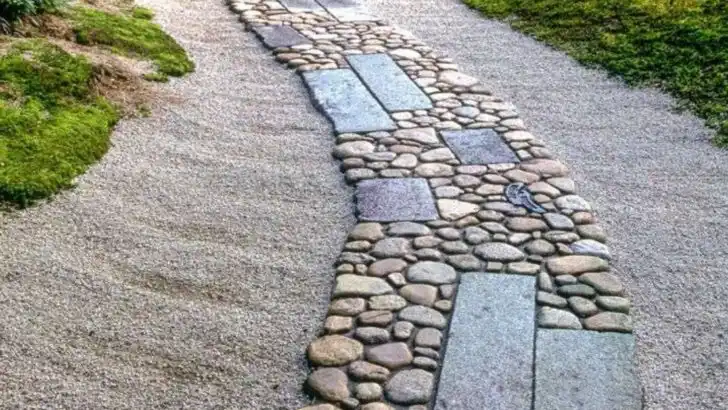Garden paths don’t have to involve concrete mixers or professional help to feel magical. With just a few basic materials—and a bit of creativity—you can create walkways that guide the eye, invite strolling, and make even the smallest garden feel like a destination.
The trick is using what you already have or can easily get your hands on. Think salvaged bricks, gravel, stepping stones, or even slices of wood. These paths aren’t just functional—they’re a chance to add texture, contrast, and story to your outdoor space.
Whether your style is rustic, tidy, or somewhere in between, these 15 charming garden path ideas are all light on tools, low on effort, and full of personality. They’re proof that with a little planning, you don’t need muscle to make magic underfoot.
Pebble Mosaic Path
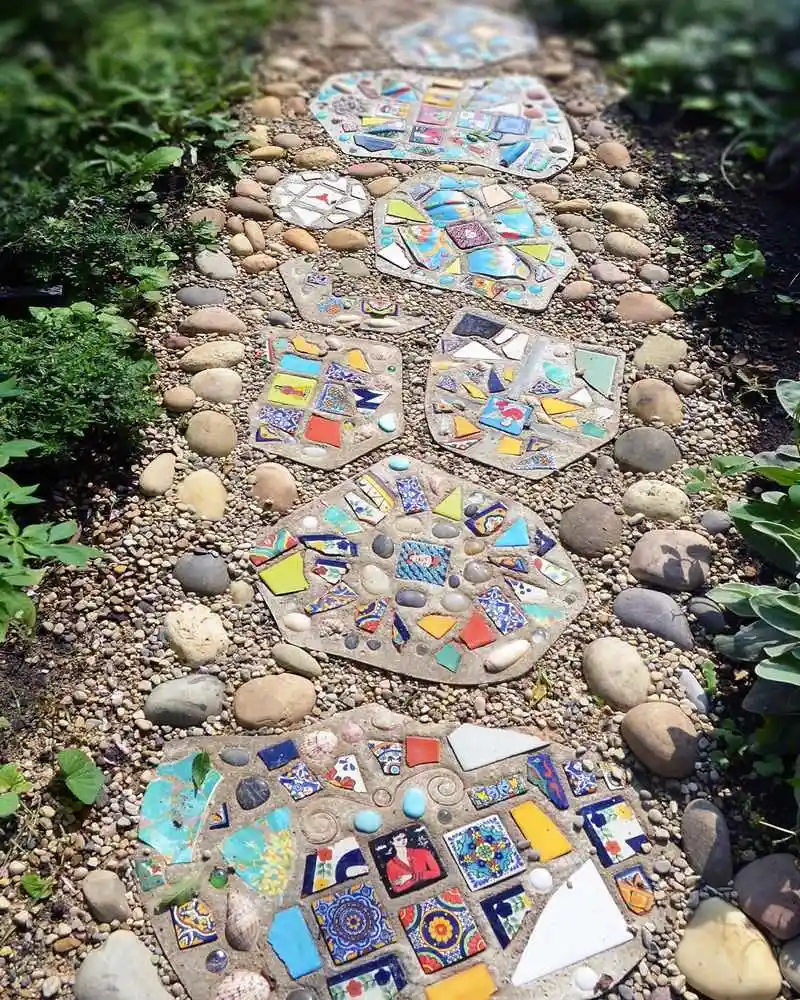
Pebble mosaics can turn an ordinary path into a work of art. Imagine crafting colorful stone arrangements in geometric patterns or whimsical shapes. Start by outlining your design on a flat surface. Once your vision is clear, lay the stones and pebbles, using a simple sand base to hold everything in place. It’s like painting, but with stones, and the result is both stunning and functional. Not only do pebbles provide excellent drainage, but they also offer a satisfying crunch underfoot.
Wooden Log Slices Path
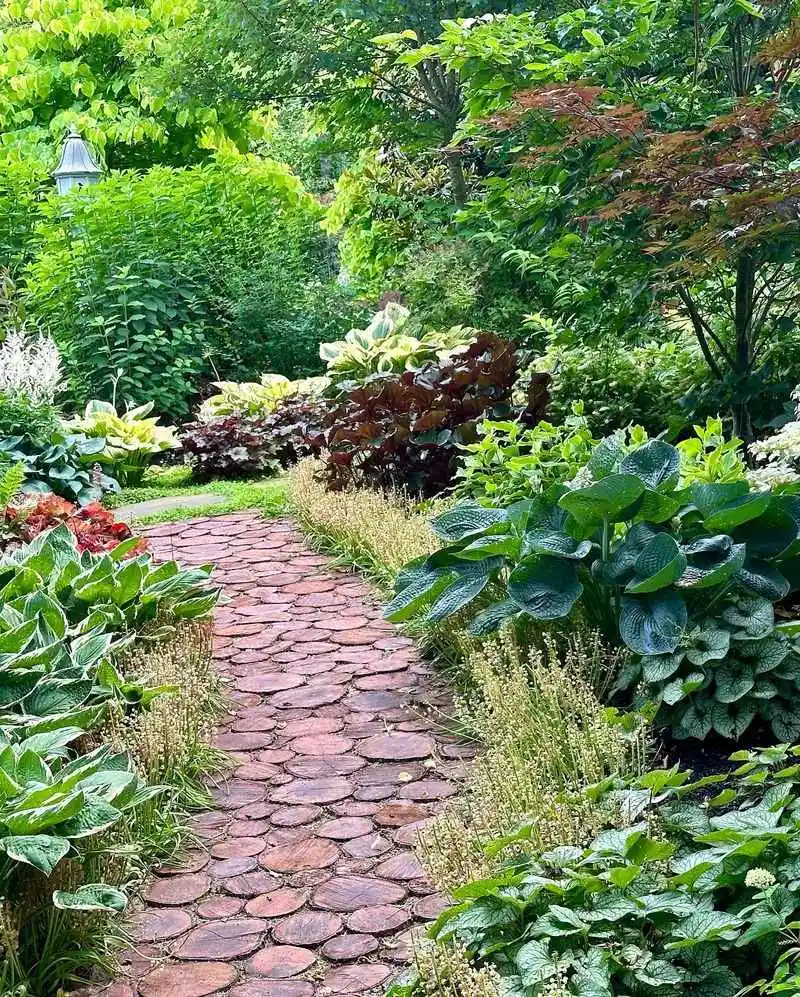
Wooden log slices bring a rustic charm to any garden. Imagine stepping onto a path made of tree cross-sections, each piece telling its own story. Simply slice logs into discs, and arrange them on your path. The varying sizes and natural wood grain create a visual feast that’s as inviting as it is practical. Seal the wood to protect against the elements, and you’ll have a durable path that feels like a walk in the woods. This is a great way to recycle fallen trees and branches.
Gravel and Stone Path
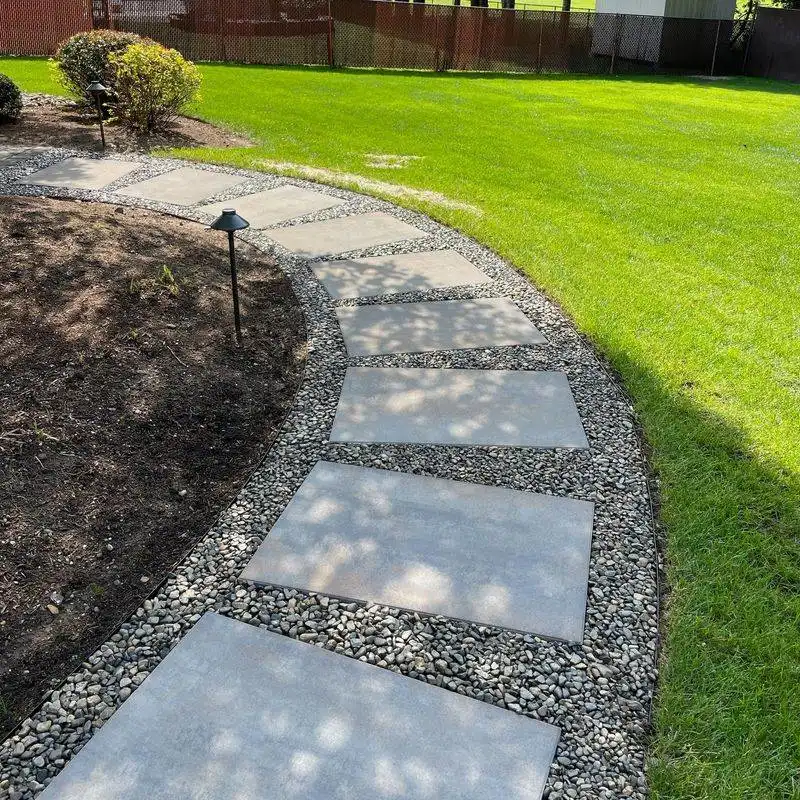
Gravel paths are the epitome of simplicity and elegance. With a base of compacted soil, a layer of gravel, and some strategically placed larger stones, you can create a path that’s both functional and visually appealing. The texture of gravel provides excellent traction and drainage, making it ideal for gardens. Choose a mix of stone colors to add visual interest. Plus, gravel’s crunch gives a pleasant auditory experience as you walk. It’s a quick and easy project with lasting impact.
Brick and Sand Path
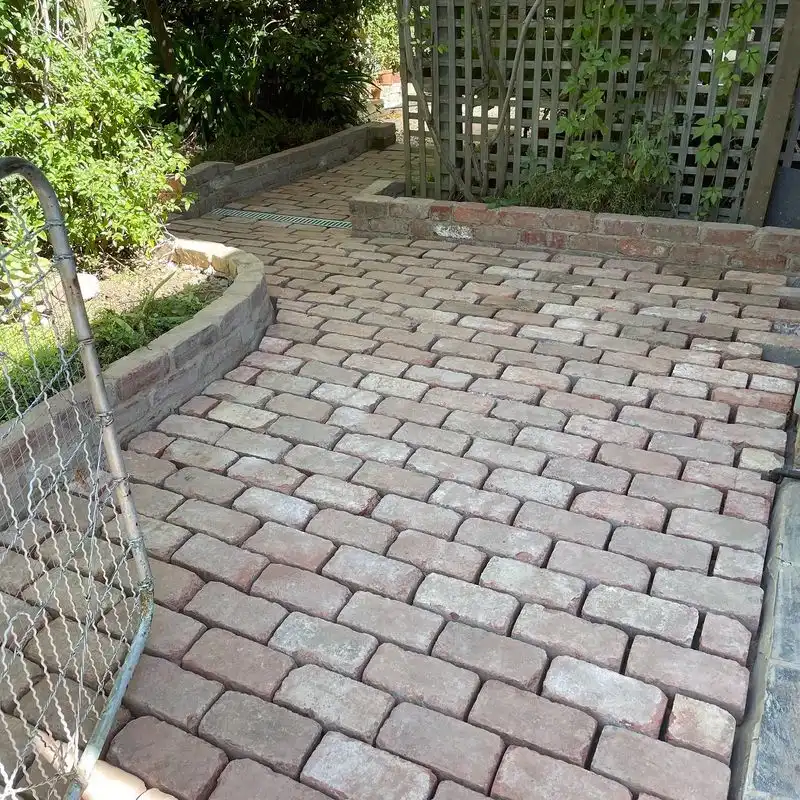
Bricks can create a timeless look for your garden path. Lay them in your chosen pattern—herringbone, basket weave, or running bond—and fill the gaps with sand. This combination offers stability and a polished appearance. The earthy tones of bricks blend seamlessly with garden colors, while the sand provides flexibility and ease of installation. It’s a classic choice that evokes the charm of traditional gardens. Plus, it’s easy to replace damaged bricks, keeping your path looking pristine.
Mulch Pathway
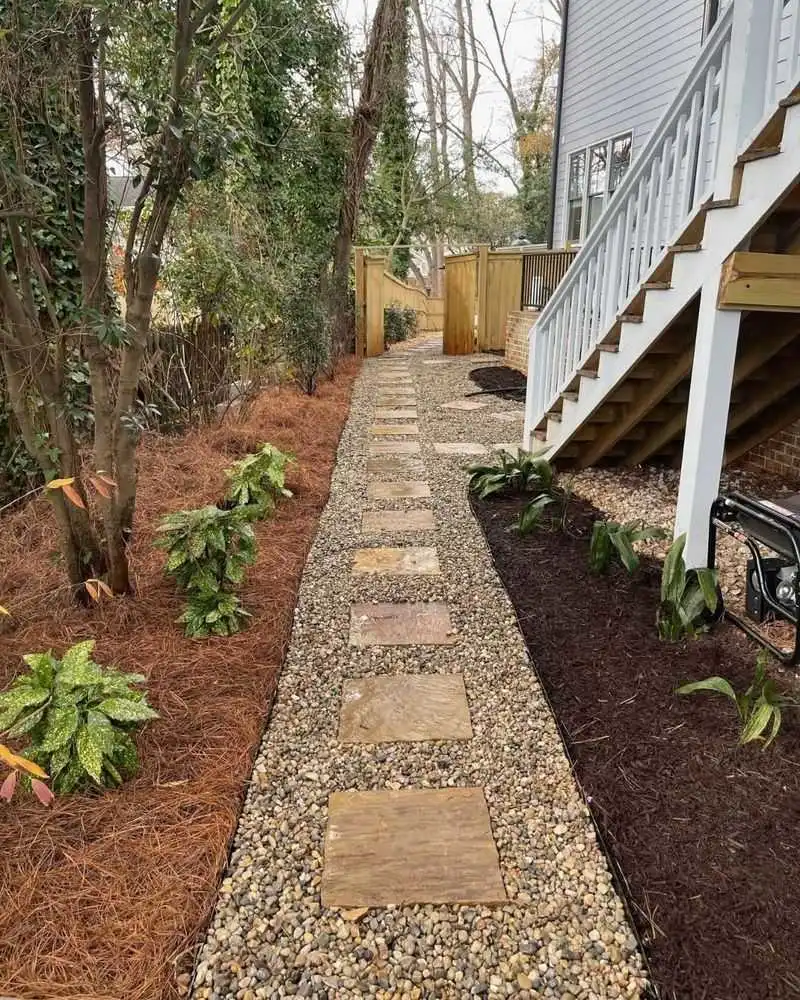
Mulch pathways are perfect for nature lovers. They mimic forest trails, offering a soft and springy surface underfoot. Simply lay a thick layer of mulch over a cleared path, and you’re done. Mulch is affordable, easy to replenish, and helps retain soil moisture. It decomposes over time, enriching the soil. A mulch path feels natural and informal, enhancing the garden’s organic vibe. It’s a low-maintenance option that suits gardens where plants take center stage.
Stepping Stone Path

Stepping stones offer a playful yet practical path solution. Choose stones with unique shapes or decorate them yourself for added personality. Arrange them at comfortable walking distances, allowing grass or ground cover to grow between. This path type provides flexibility in both design and placement. Stepping stones can be made of concrete, natural stone, or even recycled materials. They invite exploration and offer a quaint, storybook feel to your garden.
Cedar Boardwalk
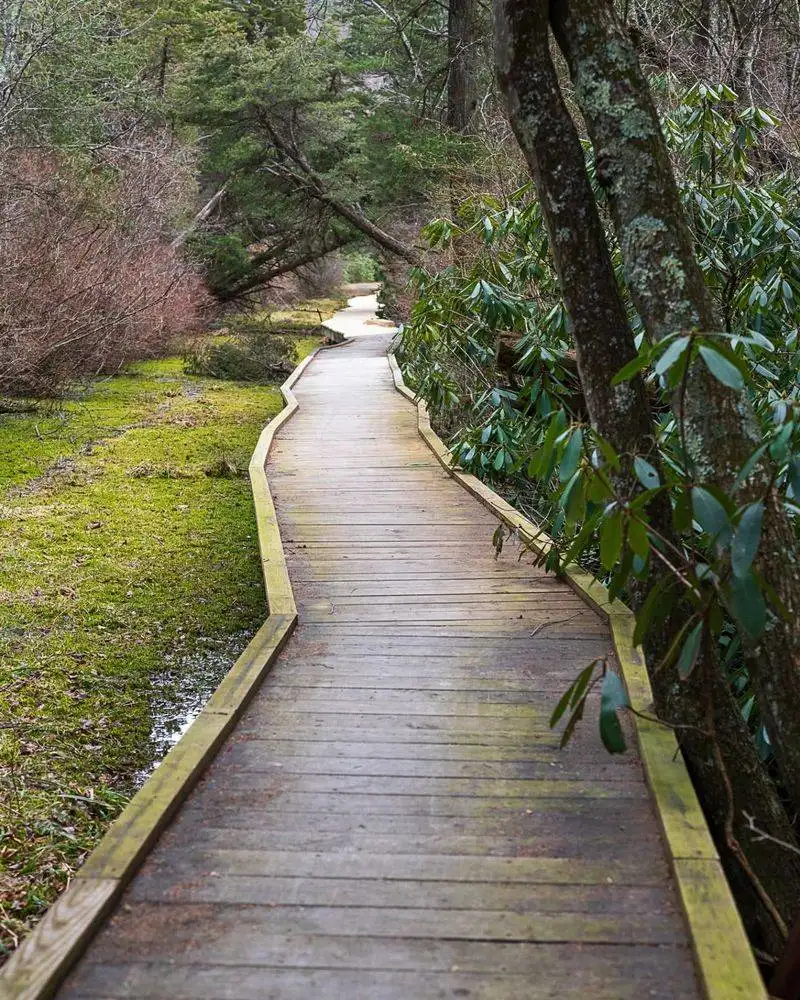
A cedar boardwalk offers a sophisticated alternative to traditional garden paths. It elevates the walkway above the ground, protecting delicate plants and preventing soil compaction. Cedar wood is naturally resistant to rot and insects, making it an ideal choice for outdoor projects. Installing a boardwalk requires careful planning but no heavy machinery—just a drill and some screws. The smooth, warm tones of cedar blend beautifully with garden landscapes, making it a chic, functional feature.
Crushed Shell Pathway

Crushed shells bring a coastal vibe to your garden. This unique material offers excellent drainage and a bright, reflective surface that lightens shaded areas. Lay them over a base of compacted soil to keep them in place. The shells’ natural white color contrasts beautifully with garden greens and blues. Walking on a shell path feels like a beach stroll, with a satisfying crunch underfoot. Ideal for coastal gardens or those seeking a nautical theme, this path is both eye-catching and functional.
Reclaimed Brick Walkway
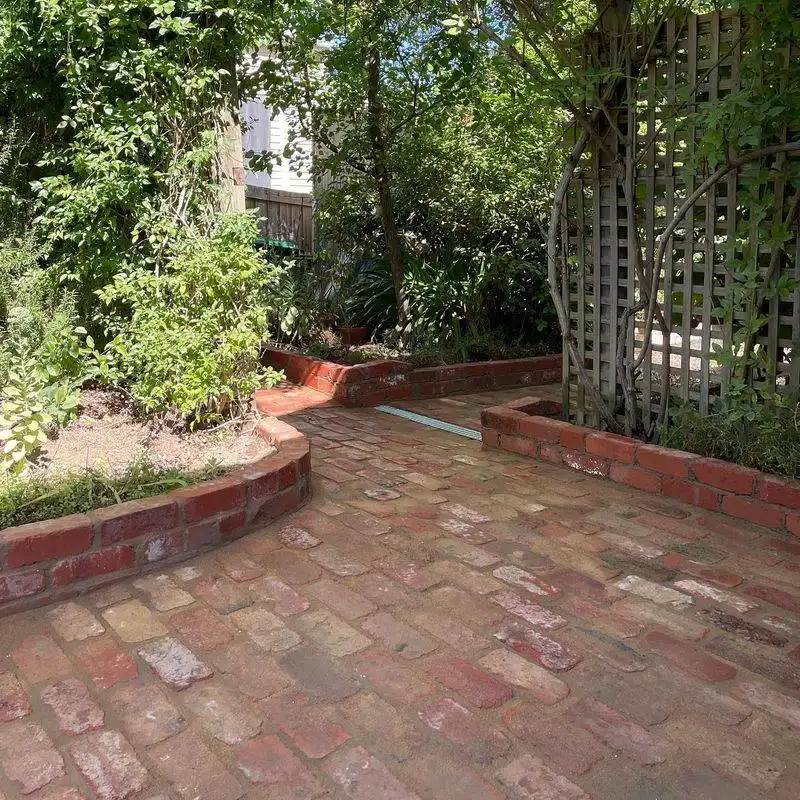
Reclaimed bricks add character and history to your garden path. Each brick is a piece of history, with its own story of wear and color variation. Lay them in a pattern of your choice—whether traditional or irregular. Their aged appearance complements eclectic and vintage garden designs. Reusing bricks is an eco-friendly choice, and their sturdy nature ensures a lasting path. It’s a project that combines creativity with sustainability, adding warmth and texture to your outdoor space.
Cobblestone Path
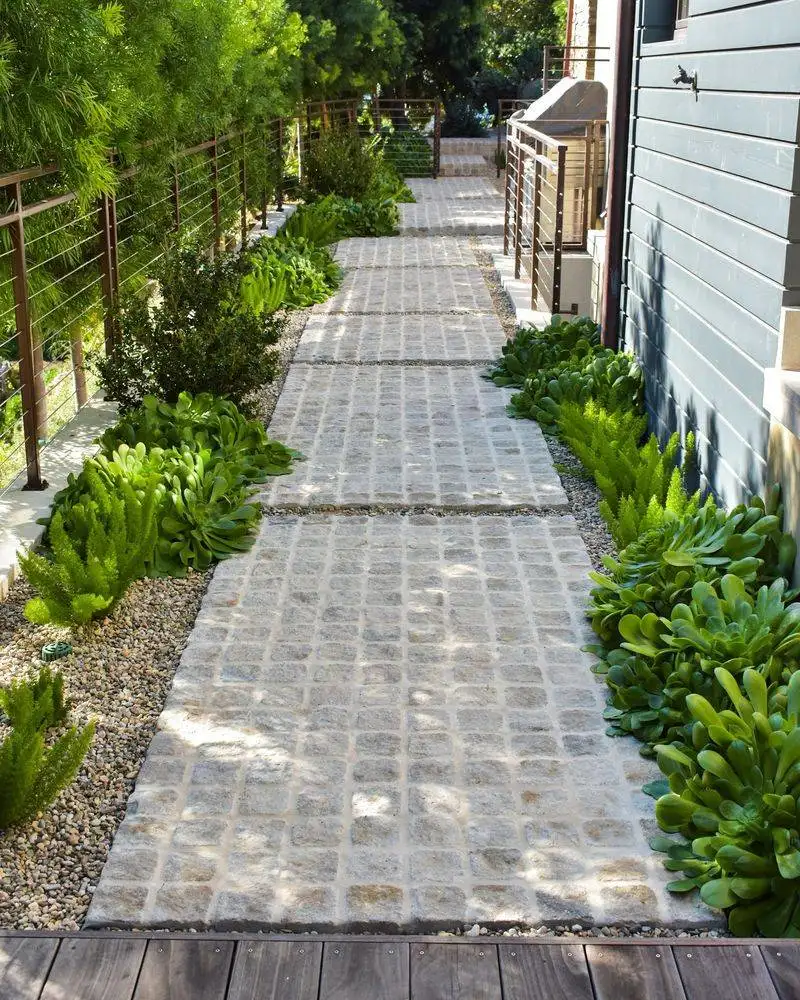
Cobblestone paths exude old-world charm. Their rounded, uneven shapes create a tactile walking experience that feels timeless. Lay each stone by hand, embedding them in sand or soil for stability. Cobblestones are durable and withstand the test of time—perfect for gardens with a classic aesthetic. Their natural color palette harmonizes with any garden, and their robust construction means they handle foot traffic gracefully. This path invites leisurely strolls and daydreams of historical gardens.
Slate Slab Pathway
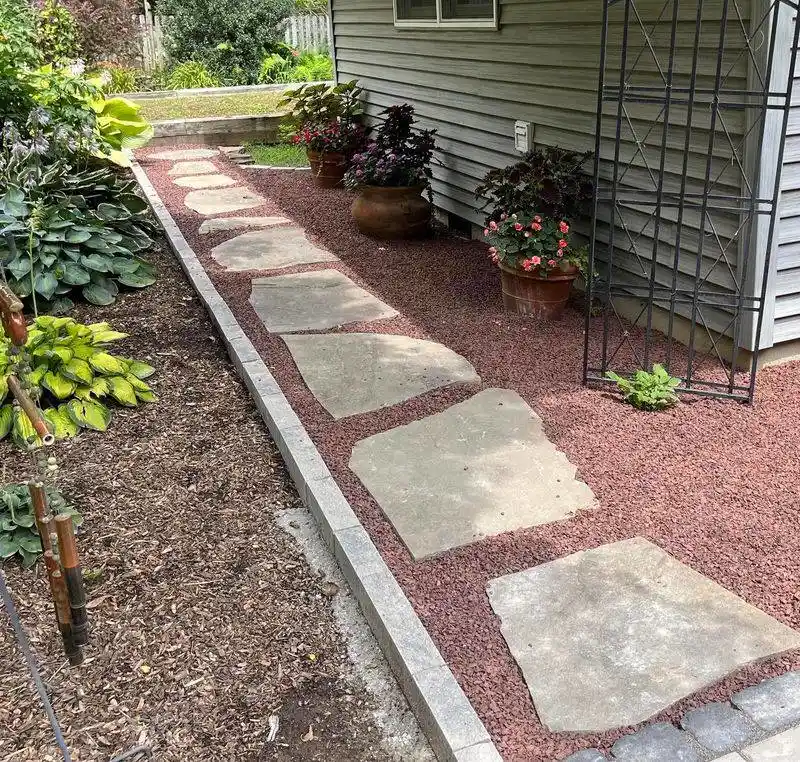
Slate slabs offer a modern twist to garden paths. Their flat, smooth surfaces make walking easy and safe, while their natural hues provide a sophisticated backdrop. Slate’s sleek texture complements minimalist garden designs, offering a clean and refined look. Arrange large slabs with precision, or mix sizes for an organic feel. This material is not only aesthetically pleasing but also highly durable, resisting weathering with grace. It’s a path choice that combines elegance with practicality.
Grass Block Pavers
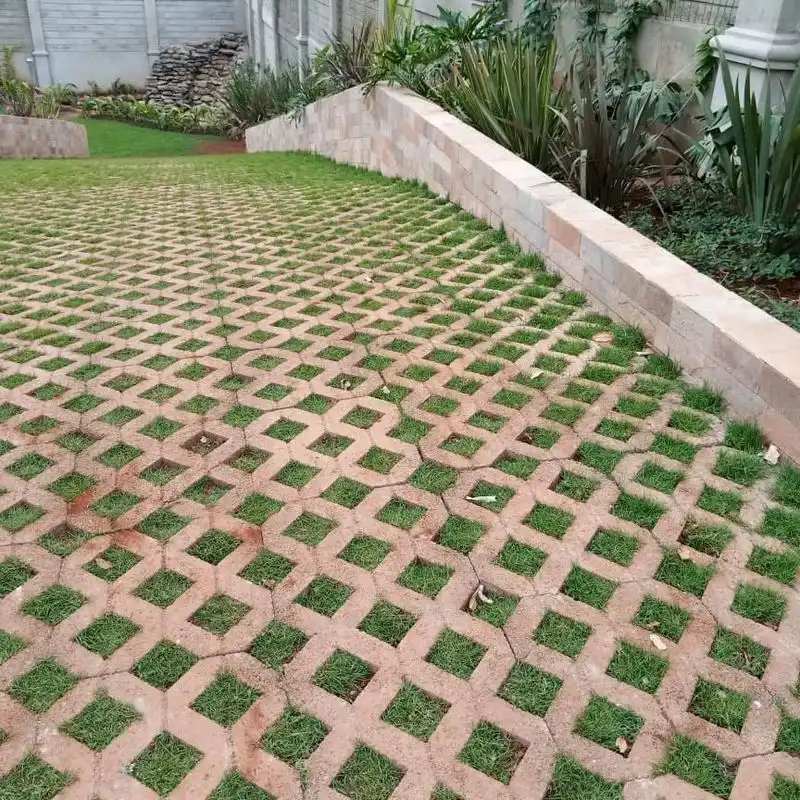
Grass block pavers merge greenery with structure, providing a sustainable path solution. These concrete blocks allow grass to grow through, blending hardscaping with the natural landscape. They’re perfect for eco-conscious gardeners who want to maintain a green look. The pavers support foot traffic while allowing rainwater to seep into the ground, promoting a healthy garden ecosystem. This versatile solution works for urban gardens or sprawling yards, offering a balance of nature and design.
Bark Chips Trail
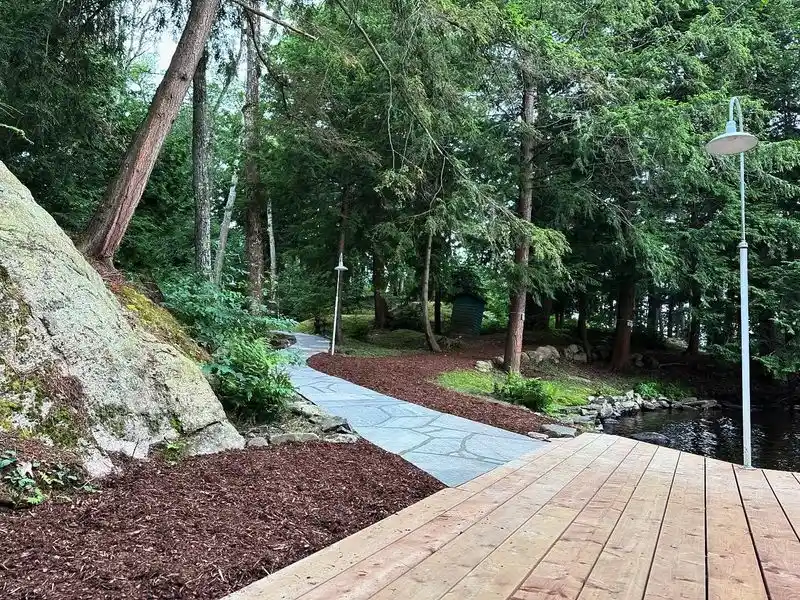
Bark chips offer a woodland-inspired path, blending seamlessly into natural surroundings. Spread them over a cleared path for a soft, cushiony walk. They’re budget-friendly, easy to spread, and provide a natural, earthy scent. As they decompose, bark chips enrich the soil, making them both a path and a garden enhancer. They’re a perfect fit for gardens with a casual, organic aesthetic, allowing plants to take the spotlight while offering a comfortable, rustic trail.
Herb-Lined Pathway
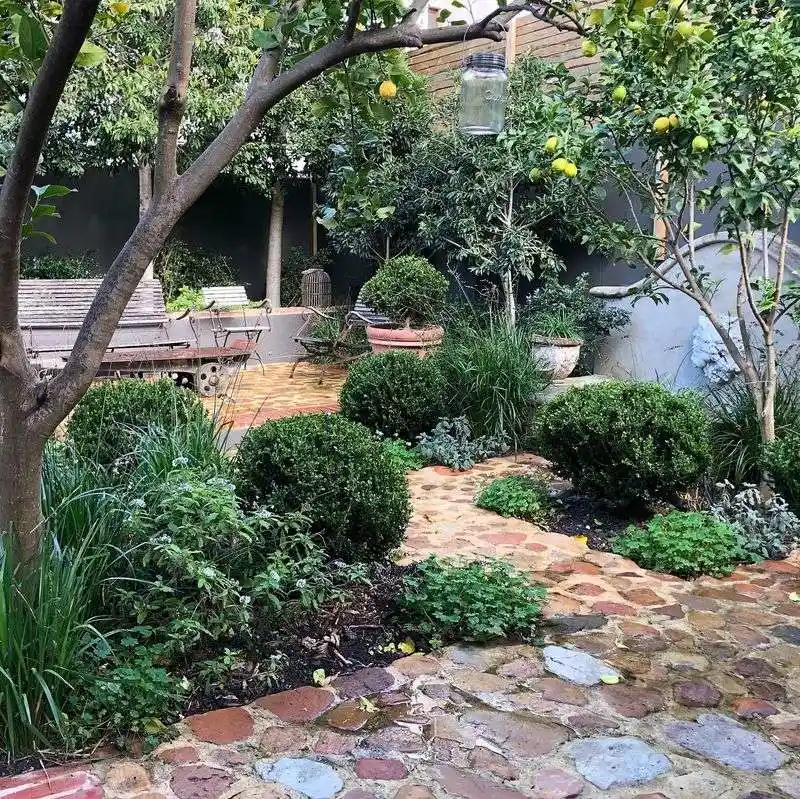
Herb-lined pathways offer sensory delight, combining form with fragrance. Plant aromatic herbs like thyme or lavender along the path edges to release scents as you walk. This approach enhances the garden’s sensory appeal, turning a simple stroll into a fragrant journey. It provides culinary herbs at your fingertips while supporting pollinators. Stone paths bordered by herbs require minimal maintenance, as the herbs deter weeds and provide a lush border. It’s a practical yet beautiful choice for any garden.
Terracotta Tile Path
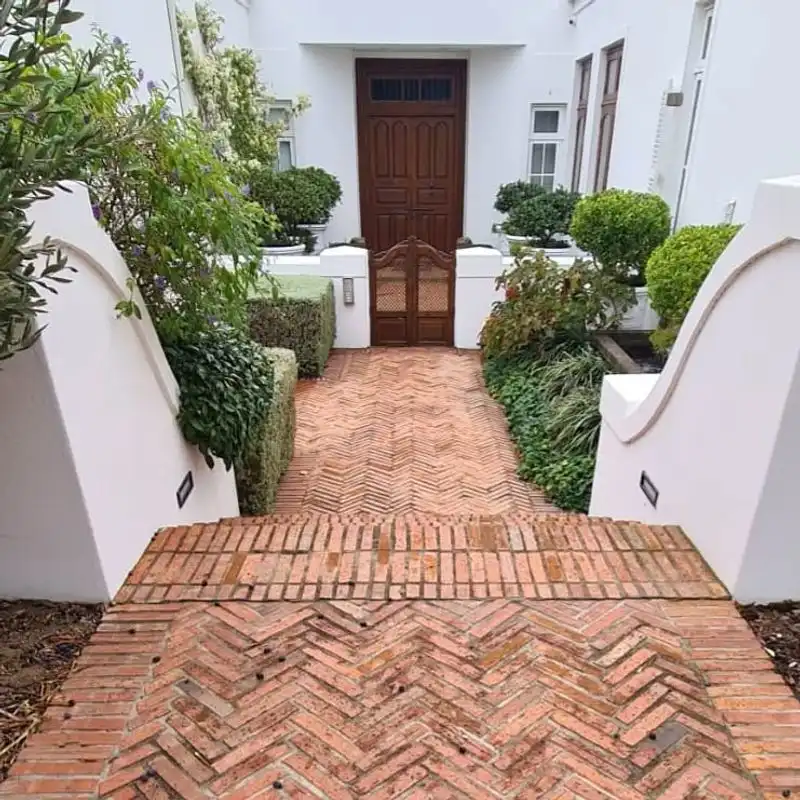
Terracotta tiles evoke the warmth of Mediterranean landscapes. Their rich, earthy tones complement vibrant gardens filled with sun-loving plants. Lay them on a leveled base, aligning each piece for a neat finish. The tiles’ natural patina adds character over time, creating a path that matures beautifully. Terracotta’s warmth contrasts nicely with cool greens, and its texture provides a non-slip surface. It’s an inviting option that brings a touch of the Mediterranean to any home garden.

